BioEngineering
A bionic hand prosthesis constructed by Polish engineers. A modern, modular, reliable SuperHand

 Project title
Project title
A new generation of bionic hand prostheses based on the controlled modular structure of the fingers, the wrist and the elbow joint for people with different types of amputation of upper limbs.
 Name of Beneficiary/Beneficiaries
Name of Beneficiary/Beneficiaries
BioEngineering.pl Sp. z o. o.
 Name of programme
Name of programme
SMART GROWTH OPERATIONAL PROGRAMME
 Competition
Competition
Fast Track
 Project value
Project value
PLN 5,713,742.00
 Funding value
Funding value
PLN 4,082,495.20
 Project delivery period
Project delivery period
1 September 2016 – 28 September 2020
Meet our team
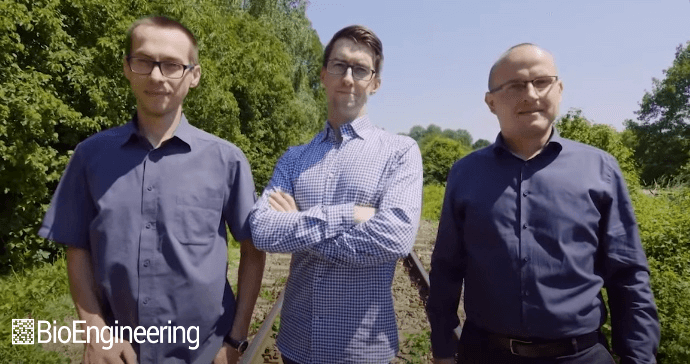
View the results of our work
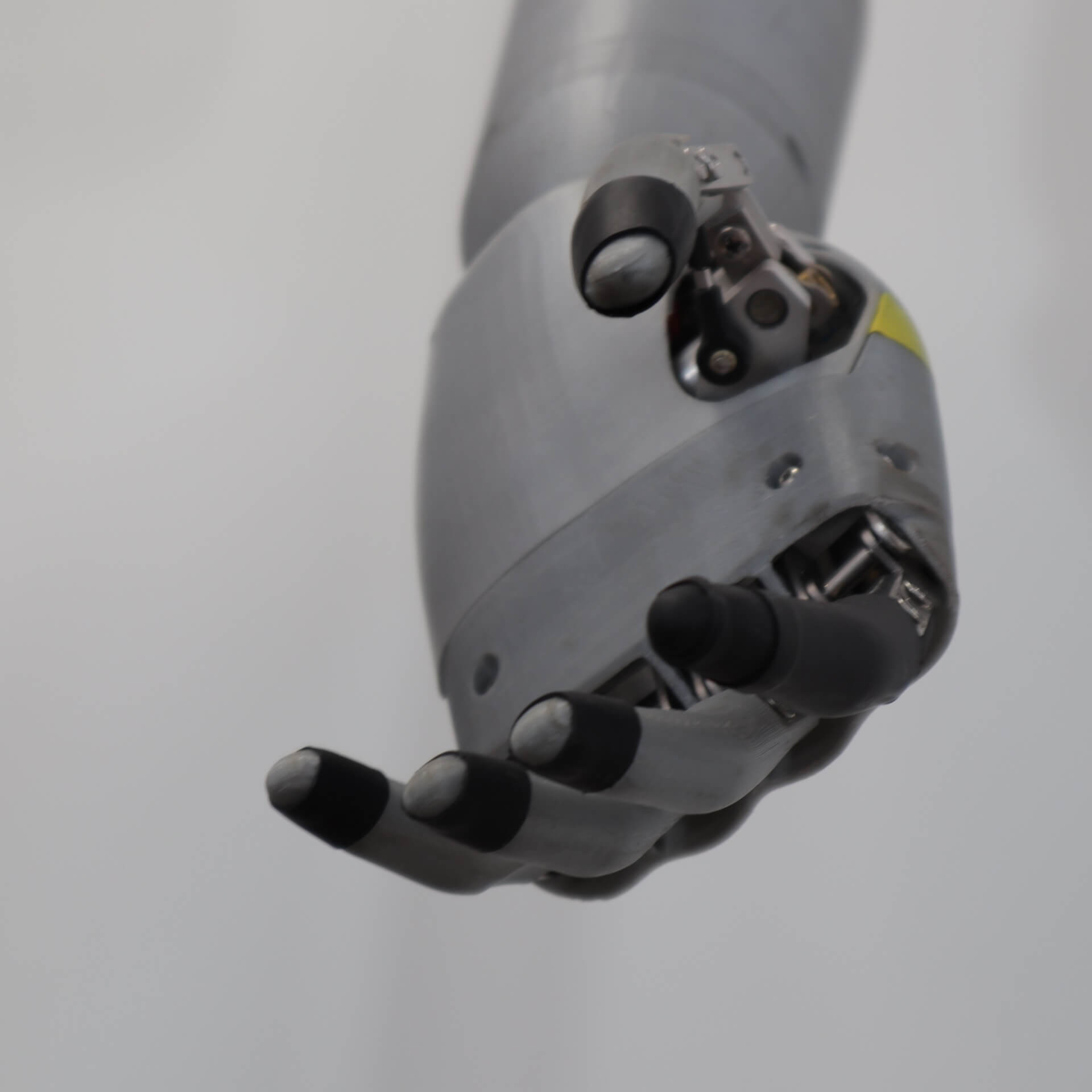
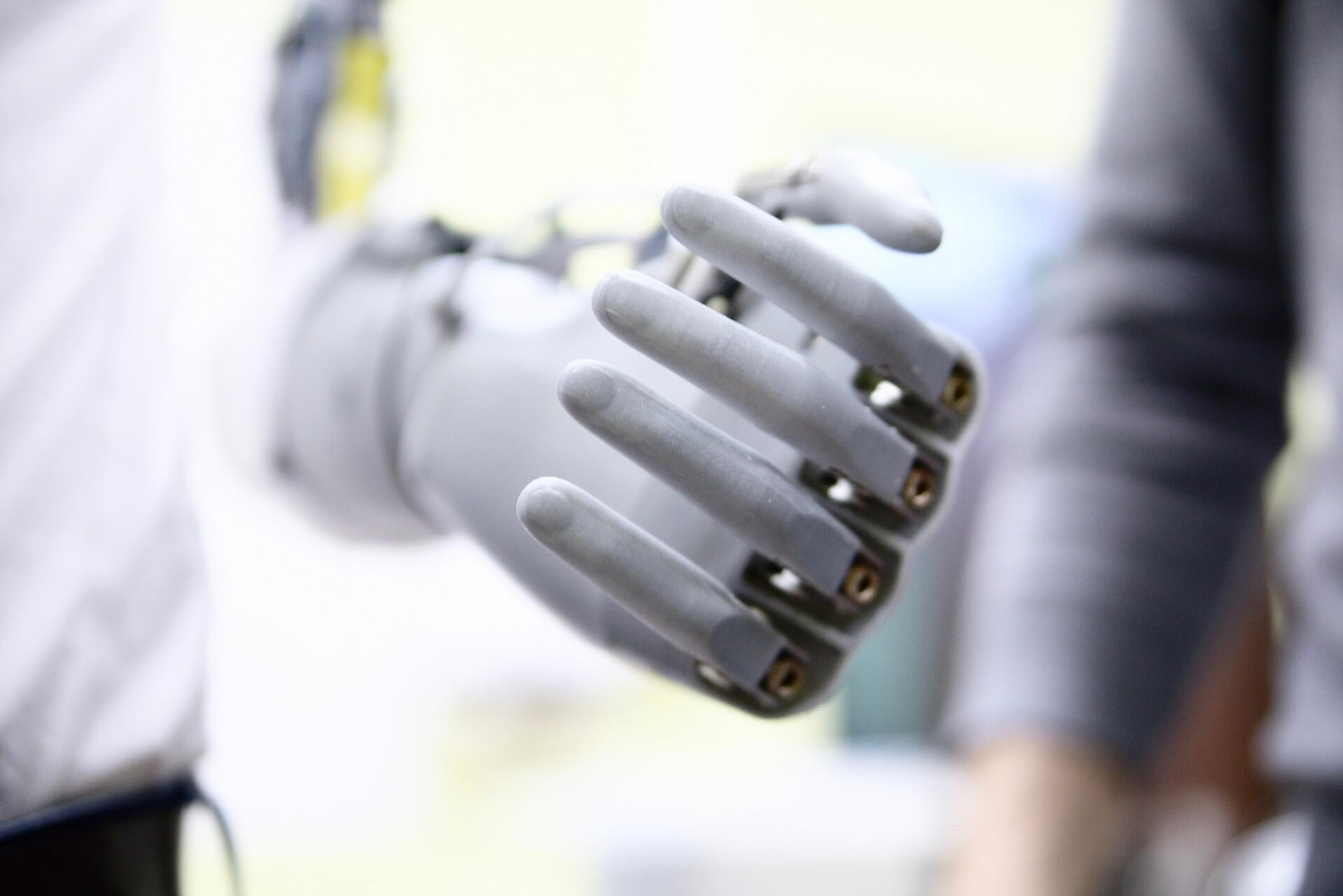
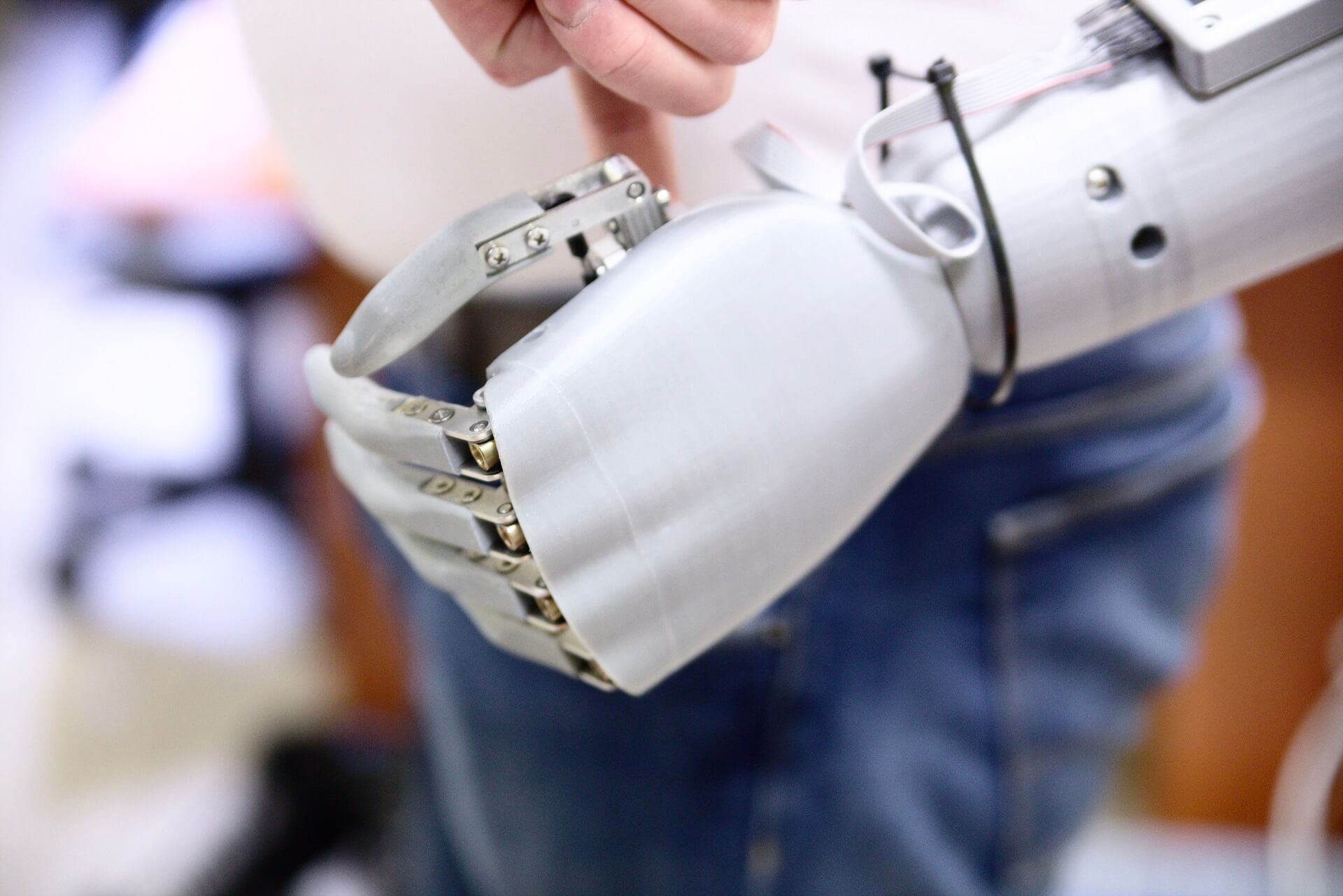
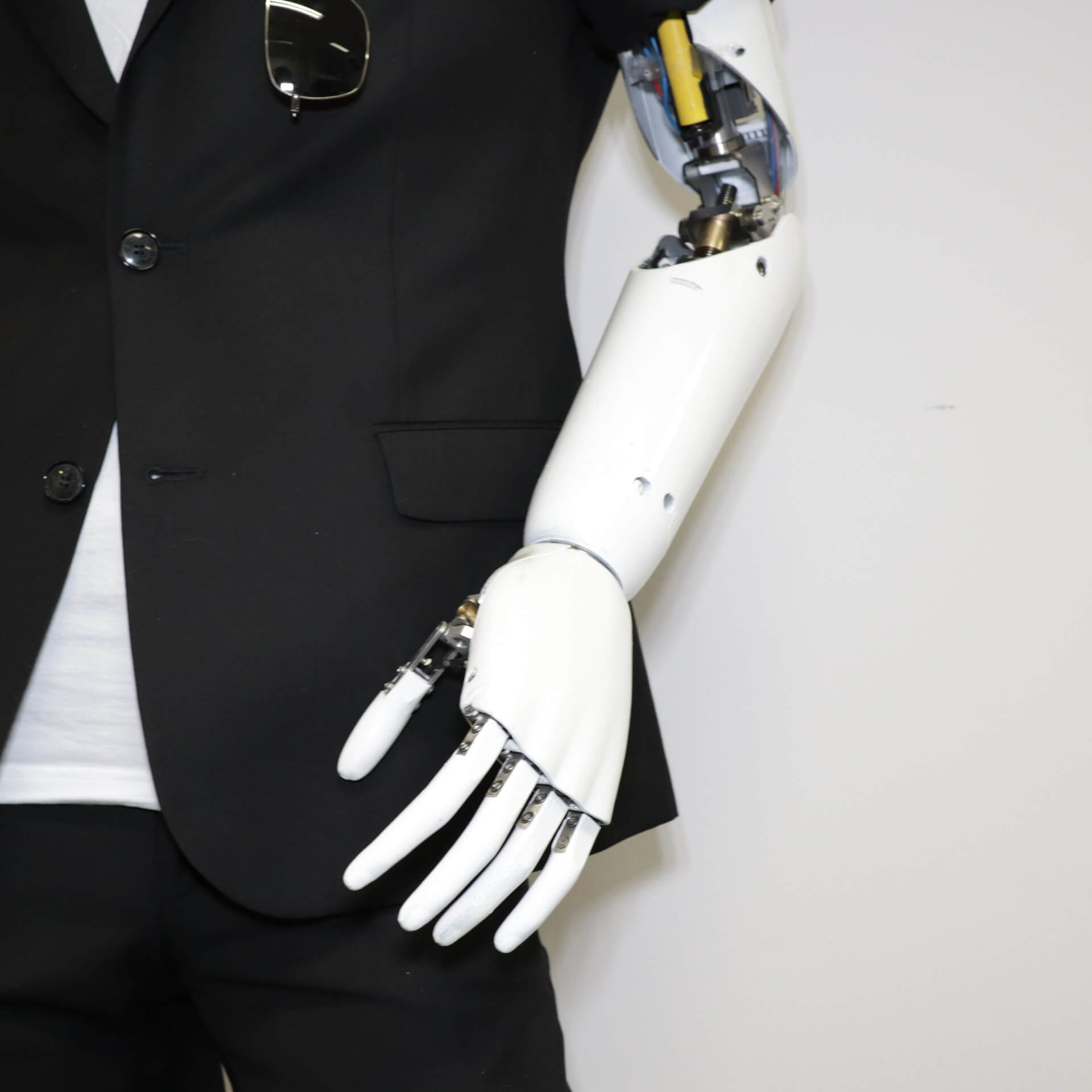
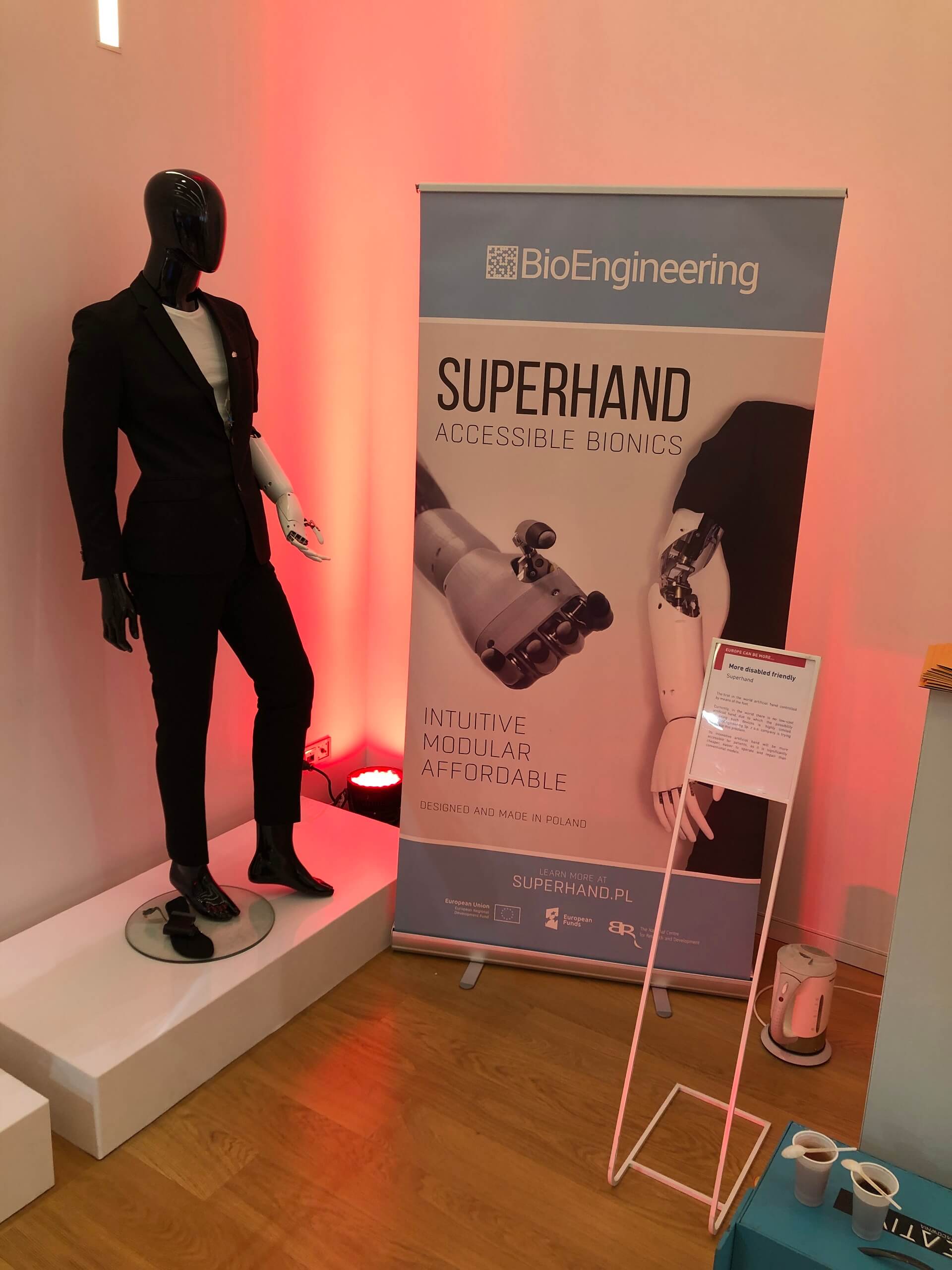
What problem is addressed by the project?
The project addresses the needs of patients who had their upper limbs amputated due to accidents or congenital defects. The project is aimed in particular at patients with amputation above the elbow joint. The artificial limbs currently available on the market are not only extremely expensive but also their control mechanisms are not intuitive for the user. Our prosthesis control mechanism using one’s foot makes it possible to learn to handle it within just a couple of minutes, while the mechanical structure offers high functionality at reduced production costs.
Cutting-edge solutions aiding disabled persons, including artificial upper limbs, are often extremely expensive and thus unaffordable. We imagined a situation when a person who suffered from an accident and became unable to work must finance the purchase of high-end equipment largely from their own resources. This is not easy. We thought long and hard about how this could be changed.
Bionic engineering serves as a basis for developing prostheses and their elements assisting people who need artificial limbs. BioEngineering.pl sp. z o.o. from Wrocław, within the project co-funded by NCBR from EU resources (SG OP), is developing an artificial hand controlled with biological signals, such as muscle spasms. The prosthesis reflects the kinematic structure of the hand – independent control of artificial fingers facilitates complex grabbing movements.
The project is part of the mission instilled in us by our teachers during our biomedical engineering studies – technology should first of all help people.
The solution is highly practical and easy to handle, and at the same time cheaper than similar solutions developed abroad. This makes it possible to reduce financial barriers, which often prevent people with amputated limbs from taking advantage of state-of-the-art solutions which may measurably improve the quality of their lives and facilitate their normal daily activity.
Who uses the project results?
Our project is addressed to disabled persons who wish to become more self-reliant in daily activities. The product is mainly aimed at active users whose disability makes them unable to independently perform daily activities. Our mission is to develop a product that will be highly practical and easy to handle, and at the same time as cheap to purchase and use as possible.
The functionality of the prostheses designed by our company lets the users restore their normal activity.
What was the greatest challenge during project implementation?
There were numerous challenges but, given NCBR’s support, technological issues certainly proved the most troublesome, i.e.:
- Designing such a finger module structure that would be small, offer a wide range of movements and be resistant. Despite their small size, human fingers make thousands of movements daily, which must not only be very precise but also withstand huge forces. Designing a reliable mechanism to serve such purposes was not an easy task, and it created a number of challenges;
- Designing a control system, both comprehensive and simple to handle. Our prosthesis can be operated in three major manners: using an independent solution measuring the user’s feet movements, using a traditional control method based on signals from the remaining muscles of the patient’s upper limb, or using a few buttons to select various functions of the prosthesis. The control system that is both capable of reading many different signals and of a small size, consumes little energy – an achievement we are particularly proud of.
Our advice for other applicants
With “Fast Track” funding, our team did not have to restrain their research imagination, and could attain their objectives in a more precise and prompt manner, by prototype testing or verifying whether the theoretical assumptions would work well in practice.
What advice can we give to other applicants?
First of all:
- Always consider your project from the market entry perspective. While this is a crucial issue for project evaluators, commercialisation must be a major objective for the whole project team.
- The quicker your product gets to the end user, the better for the project. Aiming at the minimum viable product (MVP) is an aspect that tends to be neglected in research project. At the product development stage, the project team always find some additional options that they would like to implement in their product, or intend to design new product versions, with the current one seeming far from ideal. However, you should follow the rule that a ready-to-use, though not-yet-ideal, product is always better than the ideal one in a conceptual phase.
- Project applications are evaluated by experts from multiple industries and their remarks are intended to make the project better. They should be treated like that rather than as attacks at your work.